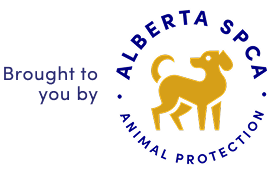Hatching Eggs or Hatching Problems?
Hatching chicken eggs is typically done as a classroom project to learn about life cycles. Before committing to hatching chicks in your classroom, there are some ethical and biological challenges to consider:
It’s not as simple as you might think.
Unless you’re experienced at hatching and raising chicks, it’s very difficult to maintain conditions for eggs to hatch and chicks to survive. An incubator needs to be closely monitored and, in a classroom setting, this can be difficult. Even with the best intentions and care, problems can arise that result in chicks being born with malformities or unable to survive.
Eggs don’t lay themselves.
Hatching eggs is only one part of a chicken’s lifecycle. In nature, chicks are raised by their mother who has an active role in their lives before and after hatching. Mother hens turn their eggs carefully and frequently to prevent embryo deformities. After the chicks hatch, the mother hen teaches them and cares for them. Watch this short 2-minute video to see the complex relationship between hen and chick. .
What will you do with the chicks afterwards?
You need to ensure you have a place for them after they hatch and the class project is complete. To prevent the spread of disease, many commercial operations won’t take chickens from outside their facility. Under no circumstances should they be sent home with students whose families are unequipped to care for them.
Birds and other animals can pose a health risk.
Live poultry can carry zoonotic diseases (transferrable to humans), which may pose a greater risk to those with underdeveloped immune systems (i.e. young children). For example, interaction with live poultry carries the risk of exposure to Salmonella bacteria. This 2015 Health Canada public notice highlights some of the dangers and symptoms of Salmonella infection, and how to take precautions.
More recently, there have been concerns about highly pathogenic strains of avian influenza (‘bird flu’) causing outbreaks in Canada and other areas in North America. Unfortunately, cases of transmission to humans and other companion animal species has been observed. Teachers should not participate in hatching activities until they have researched current information and are confident that recognized international sources such as the Centres for Disease Control and the World Health Organization – as well as Alberta Health Services – have not issued alerts about increased potential risk.
What are you teaching?
Your students look up to you as a role model for demonstrating responsible stewardship. If chicks are injured or killed during their time in the classroom, what message does that send to your students? Are you teaching them to appreciate the diversity of life found in nature, or inadvertently showing that animal life is disposable?
You are legally responsible.
As the person in charge of the animals, you are responsible under the Animal Protection Act for ensuring they are cared for and free from distress. The maximum fine for an offense under the Act is $20,000.
Alternatives
Watch a YouTube video with your class that demonstrates egg hatching:
Chick hatching (Cornell Lab Bird Cam)
How chickens breath in an egg? (NPR)
See the other pages in this section for some classroom and outdoor ideas. If you have other ideas you would like to share, please send an email.





